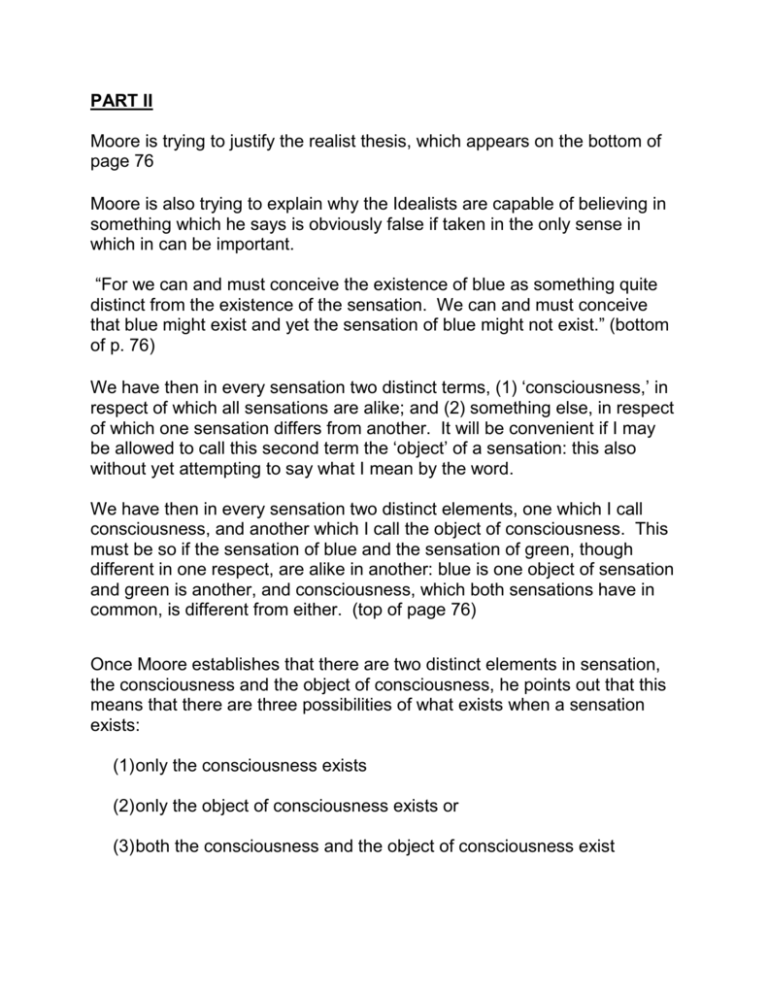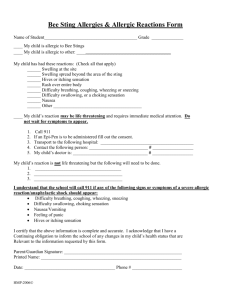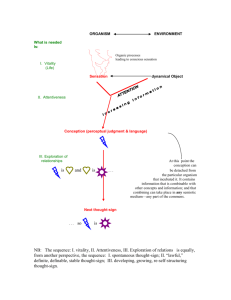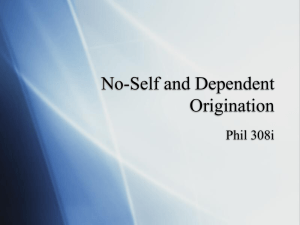Refutation of Idealism: Part II
advertisement

PART II Moore is trying to justify the realist thesis, which appears on the bottom of page 76 Moore is also trying to explain why the Idealists are capable of believing in something which he says is obviously false if taken in the only sense in which in can be important. “For we can and must conceive the existence of blue as something quite distinct from the existence of the sensation. We can and must conceive that blue might exist and yet the sensation of blue might not exist.” (bottom of p. 76) We have then in every sensation two distinct terms, (1) ‘consciousness,’ in respect of which all sensations are alike; and (2) something else, in respect of which one sensation differs from another. It will be convenient if I may be allowed to call this second term the ‘object’ of a sensation: this also without yet attempting to say what I mean by the word. We have then in every sensation two distinct elements, one which I call consciousness, and another which I call the object of consciousness. This must be so if the sensation of blue and the sensation of green, though different in one respect, are alike in another: blue is one object of sensation and green is another, and consciousness, which both sensations have in common, is different from either. (top of page 76) Once Moore establishes that there are two distinct elements in sensation, the consciousness and the object of consciousness, he points out that this means that there are three possibilities of what exists when a sensation exists: (1) only the consciousness exists (2) only the object of consciousness exists or (3) both the consciousness and the object of consciousness exist According to Moore, people have held the belief that esse is percipi solely because they have committed the self contradictory error of believing that what is experienced is indistinguishable from the experience of it (they have left out either consciousness or the object of consciousness) This view, according to him, rests on a false analysis of what exists in sensations The View of Sensation Moore Is Criticizing What Moore calls the object of sensation (blue) is merely its content (i.e. blue is the content of the sensation of blue) In each case (of sensation?) we can distinguish 2 elements and only 2: (1) The fact that there is experience or sensation and (2) What is felt or experienced The sensation forms a whole in which content is indistinguishable from existence Blue is part of the content of a blue flower (or a blue bead, or a blue beard) in the sense that we talk about blue being a property of what exists, the flower. In this view, if the blue flower exists, then blue exists as well. In this way, blue is just a quality of something (p. 78) Consequence Blue exists is part of what is implied when we say that the sensation of blue exists Or blue is part of what is said to exist when we say that the sensation of blue exists Blue is not a separable part of the sensation of blue Moore’s Position Blue is not the content of the sensation of blue. Even if blue were the content of the sensation of blue, this analysis would leave out the most important element in the sensation of blue Moore’s Argument Against the Opposition View ARGUMENT FOR BLUE AS SEPARABLE The relationship between blue and blue flowers is not the same as the relationship between blue and the sensation of blue (80) To believe that blue is a quality of consciousness would be like believing that a sensation of blue is a blue awareness But to be aware of a sensation of blue is to be aware of an awareness of blueness The fact that a sensation of blue means that we are aware of blue implies that blue is the object of my awareness and not just a quality of it. Idealists admit that they are aware of the existence of other minds, which continue to exist even when they are not aware of them. Therefore, Idealists must admit that they are aware of something that is not an inseparable part of their experience. Moore asserts that in any sensation, we are aware of something that is separable from that sensation in the same way. . . . “blue” is as much an object, and as little a mere content, of my experience, when I experience it, as the most exalted and independent real thing of which I am ever ware. There is, therefore, no question of how we are to “get outside the circle of our own ideas and sensations.” Merely to have a sensation is already to be outside that circle. It is to know something which is a s truly and really not a part of my experience, as anything I can ever know.” (p. 81)







